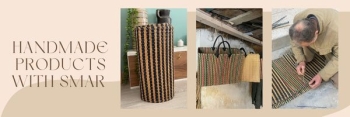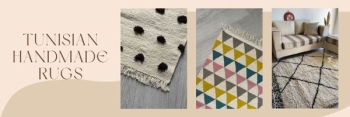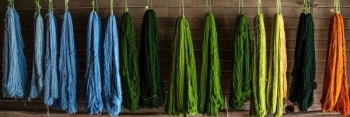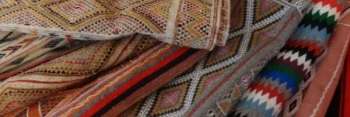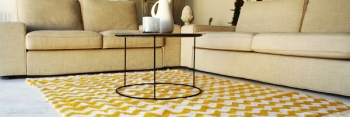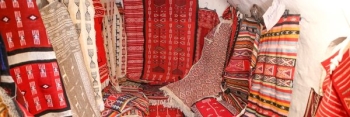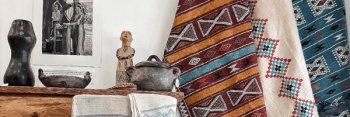Rug and Kilim
Weaving is an amazing craft which utilizes beautiful wooden tools: looms, shuttles, frames and more.
Looking at traditional textiles throughout the world is also a way to aesthetically define culture, geography, and social structure.
A carpet is a textile floor covering typically consisting of an upper layer of pile attached to a backing. The pile was traditionally made from wool, but since the 20th century, synthetic fibers such as polypropylene, nylon or polyester are often used, as these fibers are less expensive than wool. The pile usually consists of twisted tufts that are typically heat-treated to maintain their structure. The term carpet is often used in a similar context to the term rug, but rugs are typically considered to be smaller than a room and not attached to the floor.
A Kilim rug is different from a traditional rug due to the weave used to produce it. Kilim rugs are traditional, hand-woven rugs that are flat-woven and because of this, have no pile. ... Kilim rugs are formed by flat weaving with two sets of wool ropes.
The rug is thick in nature and so has a pile height. Kilim flatweave rugs are usually inexpensive. Expensive, and considered as serious investment. Have rough texture as they do not have pile height.
Kilims are produced by tightly interweaving the warp and weft strands of the weave to produce a flat surface with no pile. Kilim weaves are tapestry weaves, technically weft-faced plain weaves, that is, the horizontal weft strands are pulled tightly downward so that they hide the vertical warp strands.
- February 20, 2025
Handmade rugs are more than just floor coverings—they’re works of art that bring warmth, texture, and personality to your modern living spaces. In today’s design landscape, the fusion of traditional craftsmanship with contemporary aesthetics has created a unique niche for these artisanal pieces.
- January 24, 2025
Explore the beauty of handmade smar products crafted from natural vegetable fiber. Discover sustainable, durable, and elegant items like carpets, baskets, and decor. Order now at qartaj.com!
- January 10, 2025
Discover the timeless beauty of Tunisian handmade rugs. Crafted with care and tradition, these eco-friendly, hand-tufted rugs bring warmth, durability, and unique artistry to any space. Explore the rich cultural heritage and stunning designs of Tunisian rugs today.
- November 25, 2024
Natural dyeing is a time-honored craft deeply rooted in the traditions of Siliana, a region in northern Tunisia. This ancient technique involves extracting colors from plants, minerals, and other natural sources to create vibrant textiles, and it continues to be practiced by artisans who are dedicated to preserving their cultural heritage. In this blog, we explore the process, materials, and significance of natural dyeing in Siliana, highlighting how this eco-friendly art is gaining renewed interest in today’s world.
- October 18, 2024
In Tunisia, the tradition of weaving Berber rugs has been passed down for generations. These beautiful, handmade rugs are more than just decor—they are symbols of culture, craftsmanship, and sustainability.
Made from 100% natural wool, Tunisian Berber rugs are created by skilled artisans, often women, using techniques that have been preserved for centuries. Each rug is unique, reflecting the creativity and care of the hands that weave it.
- May 08, 2023
Tunisian rugs are a type of handicraft that has been produced in Tunisia for centuries. These rugs are known for their intricate designs, vibrant colors, and high-quality craftsmanship. Tunisian rugs are typically made using a combination of techniques, including knotting, embroidery, and weaving.
- August 23, 2022
Amazigh rugs are known by their vivid and warm colors and geometric shapes, made out of handspun wool. The design of Amazigh rugs can be read like a book full of signs and symbols. It is through knowledge of these symbols the universe of the Amazigh is unveiled.
- July 13, 2022
Do you like to get to know the Amazighs people, their cultures and their traditions ? Don't hesitate to take a look at this blog
- March 16, 2022
Discover Our products For Your Spring / Summer 22"
- October 26, 2021
5 Trends That Will Change Homes In 2022


